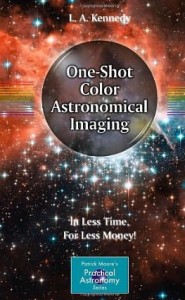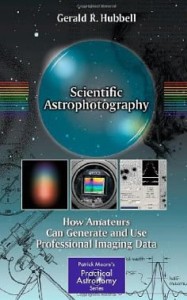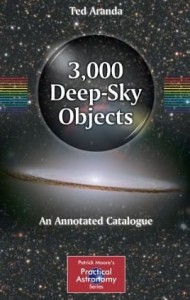One Shot Colour Astronomical Imaging Book Review
Posted on: July 21, 2014 /
 The book begins describing in detail what a colour CCD is and how it works. The next chapters then go through all the equipment you will need to undertake astronomical imaging. including mounts, telescopes, dew prevention, light boxes.
The book begins describing in detail what a colour CCD is and how it works. The next chapters then go through all the equipment you will need to undertake astronomical imaging. including mounts, telescopes, dew prevention, light boxes.
The next chapters go into detail about planning your imaging sessions and getting your equipment setup. There is then a chapter on focusing and framing your objects. The book also gives a chapter over to calibration which includes taking dark frames and flat frames. How to take exposures and auto guiding is covered.
The next couple of chapters then go into some detail on how to process your images. Histograms, stacking images, luminance layers, calibration, and sharpening, blurring, deconvolution and digital development are all covered.
The final chapter covers imaging other objects including solar imaging, comets, asteroids, photometry, astrometry and hunting for supernovae. There is a nice glossary at the rear of the book together with a list of the Messier and Caldwell objects and how to find them.
It’s a shame the images in the book are in black and white, as having colour images would be a lot better. I also had a number of pages in my version of the book with badly printed images; a number of images had lines across them.
This is quite a new book published in 2012, but it does feel slightly dated in some places. The author has used a Meade LX200 in his images with screenshots from the Meade DSI software. I don’t think a lot of people use this camera anymore other than as a guider, as there are a lot better cameras now on the market. Another point that when talking about taking Mosaics, Photoshop is mentioned, but not that there is an automatic piece of software called ‘Photomerge’ that can create mosaics for you, or there is the free Microsoft ICE software.
But please don’t think One Shot Color Astronomical Imaging is just for people with colour CCD cameras or those with DSLR cameras, as the book contains lots of good advice and tips for any imager – even if you have a mono CCD camera. This is a great book for imaging as it takes through all the steps required in order to generate pleasing images.
One Shot Colour Astronomical Imaging is thoroughly recommended if you want a good overview of how to get into imaging no matter whether you have a mono or colour camera.
One Shot Colour Astronomical Imaging is available at Amazon



